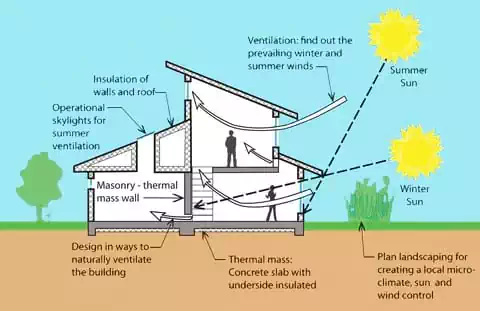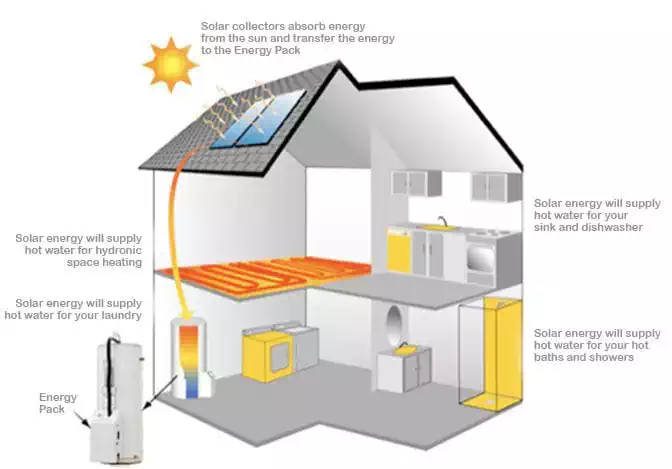Green buildings and sustainable design in Zimbabwe
Our goal with every project is to embrace the philosophy and principles of sustainable design and apply them in all phases of the green design and construction process. We are passionate about reducing our footprint on the planet while at the same time making our architecture healthier and more sustainable.
Passive systems
The climate in our region is generally temperate and passive building techniques can greatly improve the liveability and comfort of the internal spaces.
A site analysis helps understand the optimal positioning and orientation of the building to use the local environmental resources like ambient wind, daylight, and shading. Careful consideration and positioning of rooms, openings, and directions of facades provide the desired effects.
In Zimbabwe, high thermal mass elements coupled with thermal insulation help regulate the internal temperatures without spending additional energy. Shading, in the form of louvers, awnings, and shutters diminishes solar heat gain in the summer and reduces the need for mechanical cooling. Channeling the prevailing winds and creating ventilation, especially coming from nearby bodies of water also provides significant passive benefits.
Active systems
Photovoltaic solar panels provide sustainable electricity in addition to catering to the shortages of the national grid. With the new improvements, it is now also possible to contribute and sell electrical power back to the national grid too.
Solar water heating systems provide hot water for both homes and commercial properties. This hot water can also be used for heating spaces in the winter, either through radiators or underfloor heating.
Heat pumps in various forms (air, exhaust air, geothermal, or water) also provide regulation of internal temperatures but require electrical energy input, so less economical in Zimbabwe.
Sustainable building materials
Removing the need to transport manufactured materials to the site dramatically reduces the carbon footprint of construction and motivates local sourcing. Walls can be constructed out of rammed earth, bagged sand, or even sun-dried bricks locally produced, dramatically reducing the need for concrete or masonry.
Another option is to reuse or recycle materials from old nearby buildings and incorporate them into the new construction, like wood, doors, windows, hardware, tires, etc.
Sustainably grown and harvested wood is also a viable option for standard building materials.
Green design
Building information modelling (BIM) helps us integrate and analyze optimal building performance.
Building placement within the existing vegetation and surroundings can have a huge impact on the project. Green roofs can minimize heat gain and provide water harvesting, reutilization, and conservation. Waste and wastewater can also be treated and reused in greywater systems and composting toilets. Considerations of the types and placement of trees and vegetation permit winter sun and block summer heat.
Accreditation and potential subventions can be sought from a myriad of international funds promoting green building.
These and many other design choices can all add up to create a sustainable, off-grid, green building that is not only responsible for our planet and our children but is also much more economical to run. A win on all fronts!
Address
2.99 Hobourne Hill
Borrowdale
Harare, Zimbabwe
Contacts
Email: info@panarch.info
Phone: +263 (24) 2870 232




